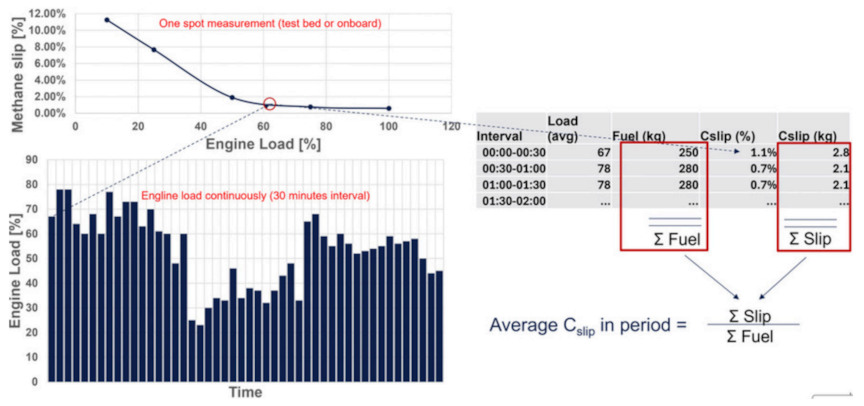EU guideline for reporting and verifying actual methane slip for FuelEU and EU MRV/ETS
The new EU guideline outlines procedures for verifying actual methane slip emissions from marine diesel engines. The verified emission factors may already be applied for the 2025 FuelEU Maritime reporting year and offer a strategic opportunity to positively impact compliance calculations – potentially lowering penalties and enhancing the financial viability of LNG-fuelled vessels. More about methane slip reporting and verification in this statutory news.
Information for: Ship owners and managers as well as suppliers and manufacturers.

FuelEU Maritime, EU MRV/ETS and methane slip
FuelEU Maritime aims to reduce greenhouse gas (GHG) intensity in shipping by promoting renewable and low-carbon fuels. It sets progressive emission reduction targets for ships over 5,000 GT calling at EU ports, covering CO₂, methane and nitrous oxide on a well-to-wake basis. The first FuelEU Maritime reporting period begins in 2025 and includes the GHG impact of methane slip emissions. Given methane’s global warming potential – 25 times that of CO₂ – it is essential to assess the actual methane slip performance of installed engines.
Methane slip must also be reported under the EU MRV regulation, and starting in 2026, it will fall within the scope of EU ETS. Shipping companies will then need to surrender allowances not only for CO₂ emissions but also for methane and nitrous oxide.
The benefits of reducing methane slip
Standard methane slip factors, as shown in Table 1, are based solely on the type of engine combustion. However, engine designers and manufacturers have introduced technical improvements that significantly reduce methane slip, with recent advancements – especially upgrade kits – delivering substantial improvements. For example, slow-speed LNG Otto engines can achieve slip rates as low as 0.7%, compared to a standard factor of 1.7% (see Table 1).

Table 1: Standard methane factors
While this reduction may appear modest, its impact on compliance is substantial. Over the next decade, as compliance thresholds tighten, applying actual methane slip factors could translate into annual cost savings easily exceeding EUR 1 million for a 24,000 TEU container ship, as an example – highlighting the strategic and financial value of accurate methane slip verification.
How to obtain actual methane slip factors for FuelEU Maritime and EU MRV/ETS ?
To apply actual methane slip emission factors under FuelEU Maritime and EU MRV/ETS , the European Commission has issued a guideline detailing the necessary reporting and verification procedures. This guidance is based on the IMO’s MEPC.402(83) “Guidelines for test-bed and onboard measurements of methane (CH ) and/or nitrous oxide (N O) emissions from marine diesel engines” , which outlines principles for spot measurements of methane slip.
In addition, the EU guideline mandates continuous engine load monitoring, with load values averaged over 30-minute intervals. These averages are used to interpolate methane slip values from established emission curves. The cumulative data over the calendar year forms the basis for calculating the actual methane slip factor, as illustrated in Figure 1.

Figure 1: Annual emission factor calculation
Recommendations
Given the potential for substantial cost savings through the application of actual methane slip emission factors – particularly where technical upgrades have been implemented – it is advisable to conduct spot measurements on dual-fuel engines with high default slip factors (e.g. LNG Otto engines) and install appropriate systems for continuous engine load monitoring.
DNV supports clients through on-board and test-bed measurements of methane slip, and provides verification services once all required elements are in place. After completing measurements and continuous engine load monitoring, DNV evaluates and approves the Methane Slip File and issues a formal statement of emission values.
